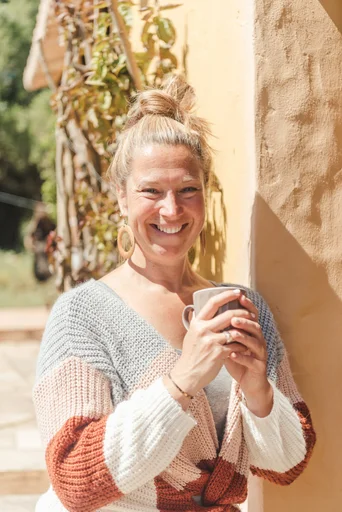A Yoga Sequence to Target Sources of Back Pain | Yoga for Back Pain

Understanding Back Pain and Its Common Causes
Back pain is a prevalent issue that affects a significant portion of the global population. According to studies, up to 84% of adults experience back pain at some point in their lives. In the United States alone, an estimated 75-85% of individuals encounter some form of back pain. This condition can range from a dull, constant ache to a sudden, sharp pain that may shoot down the leg. It is also worth noting that low back pain is considered chronic when it persists for more than 12 weeks.
The physical postures, breathing exercises, and mindfulness practices of yoga have been identified as potential beneficial interventions for individuals with back pain. A study published in the Journal of Orthopaedic Research suggests that yoga may benefit individuals dealing with back pain. Additionally, another study highlighted in The Lancet identified smoking, obesity, and occupational ergonomic factors as main risk factors for low back pain.
It's important to understand the common causes of back pain to address this issue effectively. The leading cause of disability globally is low back pain, impacting millions of individuals every year. Factors such as poor posture, muscle strain, injury or trauma, and certain medical conditions contribute to the development of back pain.
A Yoga Sequence to Target Sources of Back Pain
After understanding the common causes of back pain, it's essential to explore a yoga sequence that specifically targets the sources of this discomfort. By incorporating specific poses and mindful breathing exercises, individuals can potentially alleviate their back pain and improve overall well-being.
Preparing for Your Yoga Practice
Before diving into the yoga sequence, it's crucial to prepare both mentally and physically for the practice. Find a quiet and comfortable space where you can focus without distractions. Wear loose, breathable clothing that allows for unrestricted movement. Additionally, gather any necessary props such as a yoga mat, blocks, or straps to support your practice.
The Yoga Sequence
The following yoga sequence is designed to target the sources of back pain by focusing on stretching, strengthening, and relaxation. Each pose aims to address different aspects of back pain while promoting flexibility and core stability.
Poses to Try
Cat-Cow Pose: This gentle flow between two poses helps in warming up the spine and increasing flexibility. Start on your hands and knees with your wrists directly under your shoulders and your knees under your hips. Inhale as you arch your back, lifting your tailbone and chest towards the ceiling (Cow Pose). Exhale as you round your spine towards the ceiling, tucking your chin to your chest (Cat Pose). Repeat this sequence several times while syncing breath with movement.
Lotus Pose: Sitting in Lotus Pose allows for deep relaxation while gently stretching the muscles in the lower back. Sit comfortably on the mat with legs crossed, ensuring each foot rests on the opposite thigh. Keep your spine straight and place your hands on your knees or in a mudra position. Close your eyes and focus on slow, deep breathing while maintaining this posture.
Triangle Pose: This standing pose engages various muscle groups including the core, hamstrings, and hips while also providing a gentle stretch along the sides of the torso. Begin by standing with feet about 3-4 feet apart. Turn one foot out 90 degrees and extend arms parallel to the floor. Reach towards one foot with one hand while extending the other arm upwards, creating a straight line from fingertips to fingertips.
These poses are just a few examples of how yoga can effectively target sources of back pain through mindful movement and breath awareness.
How Each Pose Helps With Back Pain

Cat-Cow Pose
The Cat-Cow Pose is a fundamental yoga sequence that offers multiple benefits for individuals experiencing back pain. This gentle flow between two poses helps in stretching the back and increasing flexibility. By moving through the arching and rounding of the spine, practitioners can alleviate tension and stiffness in the back muscles. The rhythmic breathing combined with the movement also promotes relaxation, which can be particularly beneficial for those dealing with chronic low-back pain.
Scientific Research Findings:
Study Title: Yoga for chronic low back pain: a randomized trial
Yoga reduced low-back pain, cervical pain, pain associated with fibromyalgia, and chronic non-malignant pain (Ann Intern Med, 2011).
Lotus Pose
The Lotus Pose is known for its ability to induce a state of deep relaxation while gently relaxing the muscles in the lower back. Sitting comfortably on the mat with legs crossed allows individuals to release tension and stress accumulated in the lower back area. This meditative posture encourages practitioners to focus on slow, deep breathing, promoting a sense of calmness and tranquility. The combination of physical relaxation and mental serenity makes this pose an effective tool for managing and reducing back pain.
Scientific Research Findings:
Study Title: Yoga for chronic low back pain: a randomized trial
Yoga reduced pain associated with irritable bowel syndrome and carpal tunnel syndrome (Ann Intern Med, 2011).
Triangle Pose
The Triangle Pose is a standing yoga posture that plays a vital role in strengthening the core muscles while providing a gentle stretch along the sides of the torso. Engaging various muscle groups including the core, hamstrings, and hips contributes to improved stability and support for the spine. Strengthening these muscle groups can help alleviate pressure on the lower back by promoting better posture and alignment.
Scientific Research Findings:
Study Title: Yoga for chronic low back pain: a randomized trial
Yoga reduced pain caused by musculoskeletal conditions (Ann Intern Med, 2011).
Tips for Practicing Yoga Safely
When engaging in a yoga practice to address back pain, it's essential to prioritize safety and mindfulness. Here are some valuable tips to ensure a safe and beneficial experience.
Listen to Your Body
Yoga practitioners should pay close attention to their bodies throughout the practice. Each individual's body is unique, and it's crucial to recognize personal limitations and areas of discomfort. By tuning into the body's signals, practitioners can make necessary adjustments to poses or movements, preventing potential strain or injury. It's important to remember that pushing beyond one's limits can exacerbate back pain, so honoring the body's feedback is paramount.
Weekly yoga practice has been shown to improve back pain in study participants, emphasizing the significance of listening to the body during each session. Researchers found that individuals with low back pain experienced improvements after engaging in regular yoga practice. This evidence underscores the importance of mindful awareness during yoga sessions.
Consistency is Key
Consistent practice plays a pivotal role in reaping the benefits of yoga for back pain relief. By incorporating yoga into one's routine on a regular basis, individuals can gradually build strength, flexibility, and resilience in the back muscles. Consistency allows for ongoing progress and helps maintain the positive effects of yoga over time.
Research has highlighted that the physical postures, breathing exercises, and mindfulness practices of yoga may benefit individuals dealing with back pain. The study emphasized that yoga's benefits were largely attributable to stretching and strengthening of the muscles, reinforcing the significance of consistent engagement with yoga practices.
Knowing Your Limits
Understanding personal limits is fundamental when practicing yoga for back pain management. Certain poses or movements may not be suitable for everyone, especially those with existing back issues. It's crucial to communicate any concerns or physical limitations with a qualified instructor who can provide modifications or alternative poses tailored to individual needs.
A study focusing on Medical Yoga Therapy for chronic low back pain underscored the importance of understanding one’s limits during practice. The aim was to objectively assess the effect of Medical Yoga Therapy on chronic low back pain, highlighting its role in relaxing, energizing, remodeling, and strengthening both body and psyche while initiating a "relaxation response" of the neuroendocrinal axis.
See Also
Yoga for Expectant Mothers: 5 Poses to Ease Lower Back Discomfort
Balancing Your Energy: Yin Yoga Sequence for Spring Renewal
Truthful Yoga Flow: Asana, Chant, Gesture, Contemplation | Ethical Principles
Enhancing Creativity: 5 Yoga Asanas for Inspiring Innovation
Expert Insights: The Impact of Yoga on Pain Endurance | Yoga Journal
We bring back the importance of initiation into womanhood by Roos-Veerle Krijnen & Ella-June Henrard
Welcome to the Women’s Initiation Retreat by Naked Truth Retreats, a transformative journey into the depths of your True Feminine Nature. This retreat, scheduled from 17th to 24th August 2024 in Portugal, invites you to remember the sacredness and wholeness of your being.
Roos-Veerle Krijnen & Ella-June Henrard



